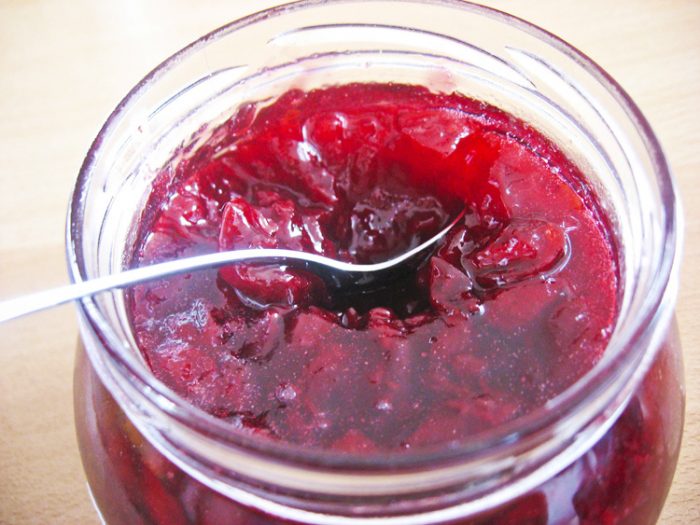Fruit spreads such as jams are a household staple for many families, and most people enjoy them regularly. However, not everyone can name the differences between a jam, a conserve, a preserve, a marmalade, a jelly, and a fruit butter. Is one nutritionally superior to the other?

Fruit Spreads Vocabulary
- Jelly: Having a thin consistency, jelly is fruit spread made from fruit juices. The fruits are cooked and then strained, so jellies are always clear.
- Jam: Like jelly, jam is made by cooking the fruit. However, the fruit is cooked until soft and mushy and then pureed, releasing the natural pectin that thickens the jam.
- Preserves: Very similar to jam, except that the fruit pieces are left in chunks.
- Conserves: Conserves are like preserves, but are typically made with a mixture of fruits and nuts that are cooked until thick.
- Marmalade: Marmalade uses the fruit’s zest, pulp, and juice, but not the whole fruit, because that would make the product bitter.
- Fruit butter: Fruit butters actually do not contain any butter. They are made from certain orchard fruits, such as apples, and are lightly flavoured with spices like cinnamon.
How Do They Stack Up Nutritionally?
- Regular Fruit SpreadsWhether you pick a jelly, jam, preserve, conserve, marmalade, or fruit butter, they all contain about 50 calories per tablespoon, almost all from the sugars. Some people believe that chunkier fruit spreads such as preserves and marmalade are richer in fiber, but a research of the common brands proved that to be untrue.Nutrition data: 1 Tbsp = 50 calories
- “Low-Sugar”Fruit spreads are naturally high in sugar that comes from the fruits. In order to create a lower-sugar product without resorting to artificial sweeteners, manufacturers have to add a number of additives to maintain the texture and color of the finished product. The result? You only save 25 calories per tablespoon, but swallow some unnecessary food coloring and additives, such as calcium chloride, Yellow 5, Yellow 6, and Red 40.Nutrition data: 1 Tbsp = 25 calories
- Sugar-FreeLike the low-sugar varieties, sugar-free jams are basically made of a mixture of fruits, a concoction of additives, and one or more artificial sweeteners. If you have diabetes, this might be an option. Otherwise, the 45 calories you save are probably not worth all the additives.Nutrition data: 1 Tbsp = 5 calories
- Gourmet or OrganicWe noticed that the organic or higher-end fruit spreads (either higher-end brands, or the higher-end varieties within a big brand) tend to contain fewer artificial ingredients and additives. This means you are getting more wholesome ingredients and a better overall product – so go for it!Nutrition data: 1 Tbsp = varies
The Bottom Line
No matter which fruit spread catches your fancy, it is important to check to labels to avoid undesirable additives like high fructose corn syrup (HFCS). Going with organic or more gourmet varieties tend to give you a more wholesome product. Try to steer clear of the low-sugar and sugar-free varieties, as they typically contain many more additives, including artificial coloring.
Alumni: University of British Columbia – Owennie is a registered dietitian with a soft spot for chocolate and coffee. She is a believer in balance and moderation, and is committed to keeping healthy eating enjoyable and fun. Owennie received her dietetics training in Vancouver, and is a member of Dietitians of Canada and the College of Dietitians of British Columbia. She has experience in a wide variety of settings, such as clinical nutrition, long-term care and outpatient counseling. Owennie has also worked for a community nutrition hotline and participated regularly as a guest radio host, where she enjoyed sharing her passion and knowledge about food and nutrition with people.


